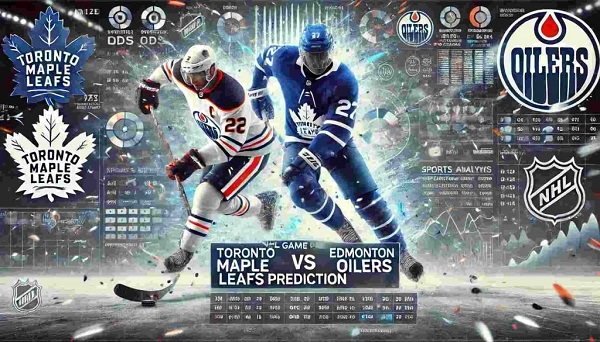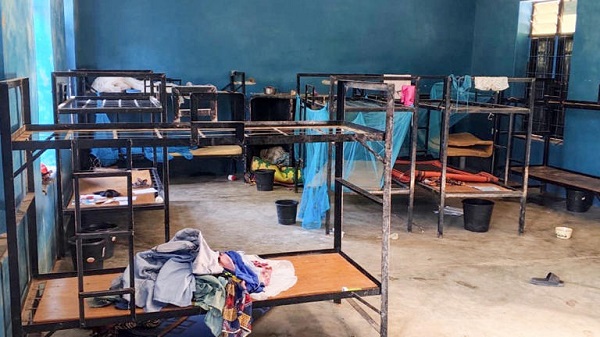Economy
Trump Could Bring Back “America First”. What Could Happen to Canada’s Natural Resource Exports?

From EnergyNow.ca
A second Trump presidency likely means more tariffs, and Canada’s energy and forestry sectors will feel the impact.
As the passing of former Prime Minister Brian Mulroney was reported, we thought back to his ratification of the North American Free Trade Agreement (NAFTA) with the United States and Mexico.
The question now is: If Donald Trump becomes the next President of the U.S., what happens to the U.S.-Mexico-Canada Agreement (USMCA) of 2020? The USMCA came after Trump threatened to pull out of NAFTA in 2018.
On Monday, the Supreme Court of the United States recently overturned a ruling from the Colorado Supreme Court that barred Trump from appearing on the ballot during the 2024 presidential election, clearing a major obstacle in his goal of once again winning the presidency in November.
If Trump does win again in November, stand by for round two of the “America First” campaign of his first term.
“After decades of the status quo, President Trump has made it clear that Americans will no longer take back seat to the rest of the world,” said Ken Farnaso, who was a deputy national press secretary during Trump’s ultimately unsuccessful 2020 re-election campaign.
So prepare, for starters, for a 10 percent tariff on imports into the U.S. — and Canada is the second largest source of those imports.
Trump’s promised tariffs would hammer Canadian exports to the U.S. In 2021 (the latest figures we see), those exports were worth $355 billion, including oil ($78.8 billion), automobiles ($26.4 billion), and natural gas ($13.4 billion).
What would Trump do about increased exports of Canadian oil to the U.S. through the Trans Mountain Expansion Project? What about our natural-gas exports, which have helped the U.S. become the world’s biggest exporter of liquefied natural gas (LNG)?
And a Trump presidency would undoubtedly mean more trouble for Canada’s forestry sector. It has long been fighting “entirely unwarranted,” U.S. tariffs on our softwood lumber — and now has been told that America will soon boost the border-crossing charges to 13.86 percent, up from 8.05 percent.
(Under the U.S. Tariff Act, the Department of Commerce determines whether goods are being sold at less than fair value or if they’re benefiting from subsidies provided by foreign governments. U.S. producers insist that provincial stumpage fees are so low as to amount to an unfair subsidy.)
And on foreign affairs, note Trump’s tough promise for China: tariffs of 60 percent or higher on imported Chinese goods. And, he has added, “Maybe it’s going to be more than that.”
This comes after the trade war he triggered during his first term as president when he imposed $250 billion in China tariffs. That disrupted the global economy, hammered consumers, and hit stock markets.
U.S. stock-market watchers have shuddered at this new promise. Nikki Haley, who suspended her campaign for the Republican nomination on Wednesday morning, has said: “What Donald Trump’s about to do, is he’s going to raise every (American) household’s expenses by $2,600 a year.”
Trump has said nothing about current U.S.-Canada relations, but has in the past declared:
- “We lose with Canada — big-league. Tremendous, tremendous trade deficits with Canada.”
- “Canada has been very difficult to deal with. . . . They’re very spoiled.”
-
“Canada, what they’ve done to our dairy farm workers, it’s a disgrace.”
Roland Paris, a Canada-based associate fellow of the U.S. and the Americas Program writes:
“ Canada is not the only country bracing for Donald Trump’s possible return to the White House – but few have more at stake.”
“Three-quarters of Canada’s goods exports, accounting for more than one-quarter of the country’s gross domestic product, go to the U.S. Given Trump’s impulsiveness and deeply protectionist instincts, Canada’s business and political leaders are understandably nervous.”
Prime Minister Justin Trudeau told business leaders in Montreal: “It wasn’t easy the first time, and if there is a second time, it won’t be easy either.”
Indeed. If the second time begins with Trump being elected on November 5, and sworn in on January 20, 2025, it could be a nasty case of “Oh, Canada.”
Business
Is affirming existing, approved projects truly the best we can do in Canada?

From Resource Works
For major projects, what is old is new again
Prime Minister Mark Carney’s second wave of “nation-building projects” sounds transformative: six new energy and mining proposals, plus a northern corridor, added to the first tranche unveiled in September, and included in the freshly passed federal budget for the fiscal year.
Together, Ottawa says, they amount to more than $116 billion in investment and are central to “realizing Canada’s full potential as an energy superpower.” That is the pitch in the federal news release.
Look closely, though, and a different picture emerges. For major projects, what is old is new again. Almost every file now being “fast-tracked” was already on the books, sometimes for a decade or more.
The new referrals to the Major Projects Office (MPO) are all familiar: the Nisga’a-led Ksi Lisims LNG terminal on B.C.’s north coast; BC Hydro’s North Coast Transmission Line; Canada Nickel’s Crawford project near Timmins; Nouveau Monde Graphite’s Matawinie mine north of Montréal; Northcliff’s Sisson tungsten project in New Brunswick; and the Inuit-owned Iqaluit Nukkiksautiit hydro project in Nunavut. The “Northwest Critical Conservation Corridor” in B.C. and the Yukon is added as a long-range concept.
Long timelines and longstanding obstacles
None of these is a fresh idea. As the Globe and Mail notes in a project-by-project rundown, Ksi Lisims has been in development for years and already faces two Federal Court challenges from nearby First Nations and opposition from Wet’suwet’en hereditary leaders who fought Coastal GasLink. The North Coast Transmission Line was identified in 2023, with B.C. legislation to fast-track it and term-sheet co-ownership deals with First Nations already in place. The Sisson mine has been stalled at the pre-construction stage for more than a decade, despite earlier approvals and new public money to update its feasibility study.
Iqaluit hydro is hardly a novelty either. As Globe reporting shows, dam concepts near the city have been studied since the mid-2000s, with the current Inuit-owned proposal building on that earlier work and backed by federal engineering funds. The Crawford nickel project was acquired in 2019 and has spent years lining up investors and a complex financing stack, documented in both CBC and Financial Post coverage. Matawinie received its Quebec authorization in 2021, has an impact-benefit agreement with the local Atikamekw Nation and now enjoys federal price-floor guarantees on graphite.
The first tranche, announced in September, follows the same pattern. LNG Canada Phase 2 in Kitimat, new nuclear at Darlington, Contrecoeur container capacity at the Port of Montréal, McIlvenna Bay in Saskatchewan and the Red Chris expansion in B.C. were all in various stages of planning long before Carney entered office. The MPO is not inventing a new project pipeline; it is trying to accelerate the one Ottawa already had.
Acceleration is the point — and industry welcomes it
Acceleration is, to be fair, the point. The Calgary-based MPO, led by former Trans Mountain head Dawn Farrell, is designed to run permits in parallel, not one after another, and to coordinate financing through bodies like the Canada Infrastructure Bank and Canada Growth Fund. Farrell told CBC that work which might have taken “five or six more years” could be cut to roughly two. In a country where large projects regularly die of regulatory exhaustion, that is significant.
Industry likes the signal. Canada Nickel CEO Mark Selby says MPO referral “puts us in the fast lane,” even without the more controversial “national interest” label in Bill C-5 that would allow cabinet to set aside parts of the Fisheries Act, Species at Risk Act or Impact Assessment Act. Inuit proponents of the Iqaluit project welcome Carney’s description of their hydro plan as a breakthrough for Arctic sovereignty, replacing millions of litres of diesel.
But a superpower strategy this is not
Still, if this is what becoming an “energy superpower” looks like, it is a modest start.
Notably absent from Carney’s list is any new oil pipeline. Alberta Premier Danielle Smith has spent months pushing a concept for a bitumen pipeline from the oil sands to the northern B.C. coast, doing provincial groundwork in the hope a private proponent will one day take it over. A BBC report sets out the feud with B.C. Premier David Eby, who dismisses the idea as “fictional” and “political” and insists no company wants it, accusing Smith of jeopardizing B.C.’s LNG ambitions. Smith has called that stance “un-Canadian.”
Western frustration is growing. In the National Post, Whitecap Resources chief executive Grant Fagerheim warns of “fury from Alberta and Saskatchewan” if a pipeline to tidewater is never prioritized and argues producers are tired of a U.S.-dominated system where Canadian barrels sell at a discount while others capture the margins. He favours an energy corridor carrying oil, gas, power and rail, not just more rhetoric about nation-building.
Northern ambitions lag behind rhetoric
Another gap is the North. The Indigenous-led Arctic Gateway partnership, Manitoba and Ottawa are already spending heavily on the Hudson Bay Railway and planning new storage and loading systems to expand the Port of Churchill for grain, potash, critical minerals and Arctic resupply. Carney talks up a “huge host of opportunities” in northern Manitoba, but Churchill sits only on the MPO’s lower-profile “transformative strategies” list, with a full plan now pushed out to 2026.
Meanwhile, the one project that has fundamentally shifted Canada’s oil export position is the long-delayed Trans Mountain expansion. As Resource Works points out, TMX now sends diluted bitumen from Burnaby to Asia, shrinking the old “captive discount” and giving Canada genuine leverage in global markets. But TMX predates Carney’s government by more than a decade and only exists because Ottawa nationalized a struggling private pipeline to get it built.
Evolution, not revolution
Carney’s major-projects push is real, and for the companies involved, the prospect of faster permits and clearer federal backing is very good news. Yet for a government that talks about mobilizing a trillion dollars and remaking Canada as an energy superpower, the current list is evolutionary rather than revolutionary. For now, Ottawa is mostly trying to build what was already on the drawing board. The tougher choices on pipelines, ports and interprovincial trade still lie in front of it.
Headline photo credit to THE CANADIAN PRESS/Adrian Wyld
Business
Taxpayers paying wages and benefits for 30% of all jobs created over the last 10 years

From the Fraser Institute
By Jason Childs
From 2015 to 2024, the government sector in Canada—including federal, provincial and municipal—added 950,000 jobs, which accounted for roughly 30 per cent of total employment growth in the country, finds a new study published today by the Fraser Institute, an independent, non-partisan Canadian public policy think-tank.
“In Canada, employment in the government sector has skyrocketed over the last 10 years,” said Jason Childs, a professor of economics at the University of Regina, senior fellow at the Fraser Institute and author of Examining the Growth of Public-Sector Employment Since 2015.
Over the same 10-year period (2015-2024), government-sector employment grew at an annual average rate of 2.7 per cent compared to only 1.7 per cent for the private sector. The study also examines employment growth by province. Government employment (federal, provincial, municipal) grew at a higher annual rate than the private sector in every province except Manitoba over the 10-year period.
The largest gaps between government-sector employment growth compared to the private sector were in Newfoundland and Labrador, New Brunswick, Quebec and British Columbia. The smallest gaps were in Alberta and Prince Edward Island.
“The larger government’s share of employment, the greater the ultimate burden on taxpayers to support government workers—government does not pay for itself,” Childs said.
A related study (Measuring the Cost to Canadians from the Growth in Public Administration, also authored by Childs) finds that, from 2015 to 2024, across all levels of government in Canada, the number of public administrators (many of who
work in government ministries, agencies and other offices that do not directly provide services to the public) grew by more than 328,000—or 3.5 per cent annually (on average).
“If governments want to reduce costs, they should look closely at the size of their public administration,” Childs said.
Examining the Growth of Public Sector Employment Since 2015
-

 Alberta2 days ago
Alberta2 days agoPremier Smith explains how private clinics will be introduced in Alberta
-

 Censorship Industrial Complex2 days ago
Censorship Industrial Complex2 days agoUK Government “Resist” Program Monitors Citizens’ Online Posts
-

 Business2 days ago
Business2 days agoUS Supreme Court may end ‘emergency’ tariffs, but that won’t stop the President
-

 Bruce Dowbiggin2 days ago
Bruce Dowbiggin2 days agoElbows Down For The Not-So-Magnificent Seven: Canada’s Wilting NHL Septet
-

 Alberta1 day ago
Alberta1 day agoAlberta introducing dual practice health care model to increase options and shorten wait times while promising protection for publicly funded services
-

 International2 days ago
International2 days ago“The Largest Funder of Al-Shabaab Is the Minnesota Taxpayer”
-

 International2 days ago
International2 days ago50 of the 315 students and 12 staff abducted from Catholic school in Nigeria last week have escaped
-

 espionage1 day ago
espionage1 day agoSoros family has been working with State Department for 50 years, WikiLeaks shows







